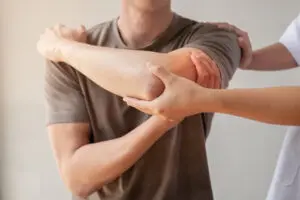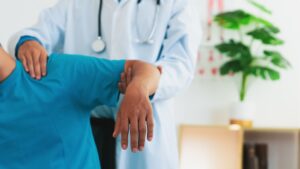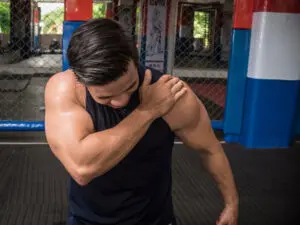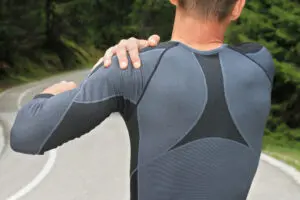If you have ever had any injury to your shoulder, you remember where it happened, how it happened, and you usually remember the pain. When it comes to separated shoulder recovery, here is what you can expect.
What Is a Shoulder Separation?
Shoulder separations can happen when you fall directly on the top of your shoulder, from a sports injury, auto accident, or a direct blow to your shoulder. Any of these traumas damages the ligaments at the acromioclavicular joint, also known as the AC. This is where the collarbone, or clavicle, meets your shoulder blade, or scapula.
If the injury is severe enough, part of the shoulder blade may separate from the collarbone.
Symptoms of a Shoulder Separation
All symptoms will vary depending on the severity of the injury.
Common symptoms include the following:
- Swelling
- Pain
- Tenderness when you touch the AC joint
- Deformity
- Limited range of motion
A mild separation may only have slight pain and mild swelling, and your shoulder will appear normal.
If it is a more severe injury, you will have more intense pain and swelling, but your arm and shoulder will still look normal.
However, with a severe separation, the top part of your shoulder can look deformed with the pain and swelling which is very intense and obvious. There may be apparent bruising, and there may even be a bulge above the shoulder with downward movement. In some cases, the collarbone even pokes out of the skin.
What to Expect With a Shoulder Separation Recovery
As per the symptoms, your treatment and recovery is dependent on the severity of the separation. Unless you have a very severe separation, most patients heal in 2 to 12 weeks using ice, over-the-counter pain medications, and wearing a sling. Healing may be slower if you have arthritis in your shoulder or if you have damaged the cartilage in your shoulder.
As your pain eases, try some range of motion exercises as recommended by Dr. Samuel Koo. After your injury has healed, do not lift heavy objects for at least 8 to 12 weeks.
With a very severe separation, your shoulder will be highly unstable. After trying all of the above treatments, you may still be dealing with pain and weakness. Surgery at this point may be recommended by Dr. Koo.
Shoulder Separation Surgery Recovery
Surgery to reconstruct the ligaments is not always successful, especially for those athletes who return to contact sports.
In addition, there is a lengthy recovery after surgery:
There may still be a high risk or recurrence even after surgery.
Contact shoulder specialist Samuel Koo, MD, MPH at (425) 823-4000 if you have sustained a shoulder injury or want advice to prevent a future shoulder separation.




